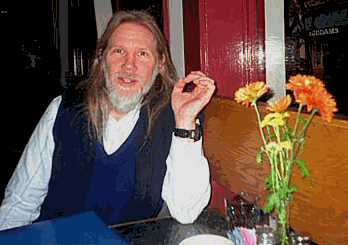


The One Time Pad
In Theory: perfect
In Practice:
too many problems
Problem: How do two people who have not communicated before start sending encrypted messages?
Answer: Public Key Cryptography
Public Key Cryptography
 |
|
 |
Whitfield Diffie Martin E. Hellman
"New Directions in Cryptography"
IEEE Transactions on Information Theory, November 1976.
WHITFIELD DIFFIE
http://www.wired.com/wired/archive//3.33/diffie.html?person=whitfield_diffie&topic_set=wiredpeople
These have the three properties:
Each undoes the other
Each is efficient to apply
Knowledge of E gives no useful knowledge
of D.
Suppose Alice wants to send a message to Bob
Call the message M.
Alice looks ups Bob's public key EB and computes the encrypted message
EB(M) which she sends to Bob.
Bob then applies the private decryption key DB to
obtain
DB ( EB(M ) ) = M
Bob is the only person
who knows DBso
he is the only person who can decrypt this message.
Authentication
How does Bob know the message really came from Alice? How could he prove in court that Alice sent it?
In addition to the message M, Alice signs it with her signature S to which she first applies her secret decryption key,
She sends Bob DA(S)
He looks up the public EA and applies it to obtain
EA (DA(S ) ) = S
So Public-Key Crypography solves many problems of Privacy and Authentication and provides an easy way for two people to begin commnicating.
The only question is: How do we find a pair of functions E and D which fit the criteria?